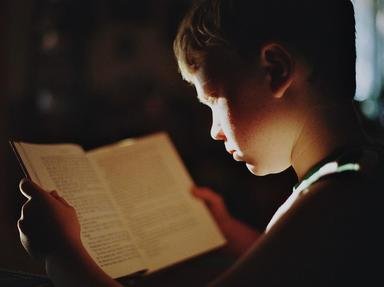Quiz Answer Key and Fun Facts
1. 'The Rape of the Lock' (1712)
2. 'Charlie and the Chocolate Factory' (1964)
3. 'The Chocolate War' (1974)
4. 'Like Water for Chocolate' (1989)
5. 'Curious George Goes to a Chocolate Factory' (1998)
6. 'Chocolat' (1999)
7. 'Harry Potter and the Prisoner of Azkaban' (1999)
8. 'Death by Chocolate' (2003)
9. 'The Chocolate Lovers' Club' (2007)
10. 'The True History of Chocolate' (2007)
Source: Author
looney_tunes
This quiz was reviewed by FunTrivia editor
MotherGoose before going online.
Any errors found in FunTrivia content are routinely corrected through our feedback system.

